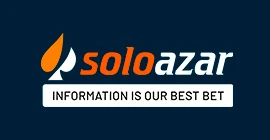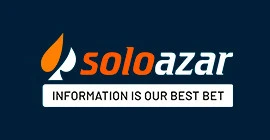How do you define customer acquisition costs? By Sportradar
Tuesday 28 de February 2023 / 12:00
2 minutos de lectura
(St. Gallen).- In essence, customer acquisition costs quantify the aggregate amount spent by a business to acquire a new customer. In practice though, this definition is open to different interpretations, especially in terms of which costs should be included in the calculation.

CAC or CPA?
There is a degree of confusion surrounding the widely used terms to describe such costs. Cost Per Acquisition (CPA) is the most common description in established sports betting markets. However, Customer Acquisition Cost (CAC) is used more commonly in North America.
CPA is not to be confused with Cost Per Action, which is a common metric in the digital space that measures the cost of signing up someone who is not necessarily a paying customer. For example, social media platforms will typically measure Cost Per Action, and this is also often used in affiliate-based arrangements in betting and other industries.2 However, for the purpose of consistency, any references to CPA in this paper relate to Cost Per Acquisition.
Costs clarity
There is widespread inconsistency regarding the costs that are included in the acquisition calculation. Elements of the journey can be tracked in a number of ways, including link codes for social or affiliate marketing, pay-per-click campaign data and promotional codes.
However, focusing only on the digital touchpoints can lead operators to ignore other important drivers that are less tangible – like seeing or listening to an advertisement on the television or radio, driving past an out-of-home billboard, or recognising a sponsor of a sports team at a game. It also sets aside the importance of word of mouth in attracting new customers. So-called “attribution gaps” are therefore common.
Sign-up forms and surveys, designed to find out how customers have engaged initially with a brand, are imperfect, given that the honest participation of the public cannot be guaranteed. Consequently, such discrepancies mean like-for-like cost calculations are notoriously unreliable.
“Ideally you look at your CPA from a multi-touch attribution that calculates all costs at every step of the funnel”
According to Florian Geheeb, Sportradar’s Global Director of Advertising Sales, making inconsistent cost comparisons is the most common mistake in these instances. However, if an operator can include the same types of costs in their CPA calculations over months and years, then at least the reliability of internal evaluations on a year-to-year basis will be enhanced.
“In an ideal world, you look at this from a multi-touch attribution so that you basically calculate all costs that you have at every step of the funnel, from the first impression shown to a potential prospect to the moment he or she converts,” Geheeb said. “If you are lacking this from a technical point of view then you obviously need to make assumptions. It is not so much about how you define it, but the most important aspect is to have a clear understanding of how you want to measure it.”
To illustrate the inconsistency, while expenditure on marketing and media campaigns is typically included in the calculation, sign-up bonus costs are often left out. This lack of standardisation – sometimes even internally between different departments of the same business – means such figures may be unreliable. Meanwhile, having less than three months of data available in a particular market can make CPA projections nothing more than “an educated guess” for an operator, Geheeb said.
Measurement hurdles
While operators may be able to identify their best-performing channels, it can be fiendishly difficult to measure the total cost of each individual’s multi-step journey to become a paying customer. In fact, operators have to navigate a number of hurdles in order to measure the relevant touchpoints.
Third-party internet cookies, which have long provided an established way of tracking online activity, were discontinued by popular web browsers like Firefox and Safari in 2019 and 2020 respectively. Google also plans to phase out such cookies from its Chrome browser at some point in 2023.
“A last click attribution approach is not sufficient, providing limited understanding of the customer journey and suggesting wrong optimisations”
More broadly, focusing on CPA in isolation can offer an incomplete picture. According to Mike Smith, Sportradar’s Head of Advertising in the US, if an operator assumes that digital costs can only be justified if specific touchpoints trigger a first-time deposit, then other vital influences on encouraging the individual into the sales funnel may be overlooked.
Geheeb said that a last-click attribution approach is “simply not sufficient”, providing a limited understanding of each customer – and can be even worse than no attribution at all if it suggests the wrong optimisation.
Instead, operators should adopt sophisticated multi-touch attribution models, according to Geheeb. There are various types of these models, ranging from ‘linear’ – giving equal weight and revenue credit to all touchpoints – to ‘full path’, which attempts to allocate the bulk of the credit to the major milestones on the customer journey. If even more granular detail is required, weighted multisource attribution attempts to measure the contribution of every step of the sales cycle, although these models are difficult to apply.
Categoría:Gaming
Tags: Sports Betting, Sportradar, Sportsbook ,
País: Switzerland
Región: EMEA
Event
iGaming Club Conference Cancun
24 de November 2025
Levon Nikoghosyan Confirms iGaming Cancun’s Success and Future LATAM Expansion
(Cancun, SoloAzar Exclusive).- The vibrant energy of iGaming Cancun has set the tone for a new chapter in the Latin American iGaming industry. Levon Nikoghosyan, CEO and Co-Founder of AffPapa and iGaming Club, shared his enthusiasm for the event’s debut in Mexico, highlighting its impact on the regional market and the company’s ambitious plans for the future.
Thursday 04 Dec 2025 / 12:00
iGaming Club Cancún 2025 Concludes Successfully with Strong Connections in Its First LatAm Edition
(Cancun, SoloAzar Exclusive).- iGaming Club Cancún 2025 came to a close last night with a comprehensive experience of conferences, networking, and the AffPapa iGaming Awards LATAM gala, consolidating itself as a unique space for operators, affiliates, and providers in the region.
Thursday 27 Nov 2025 / 12:00
iGaming Club Cancún 2025: Affiliates, Operators, and Innovation Take Center Stage on Final Day
(Cancun, SoloAzar Exclusive).- The second and final day of iGaming Club Cancún 2025 unfolds today, bringing together operators, affiliates, and select B2B providers in a unique networking and conference environment that highlights the evolving dynamics of the Latin American iGaming market.
Wednesday 26 Nov 2025 / 12:00
SUSCRIBIRSE
Para suscribirse a nuestro newsletter, complete sus datos
Reciba todo el contenido más reciente en su correo electrónico varias veces al mes.




















